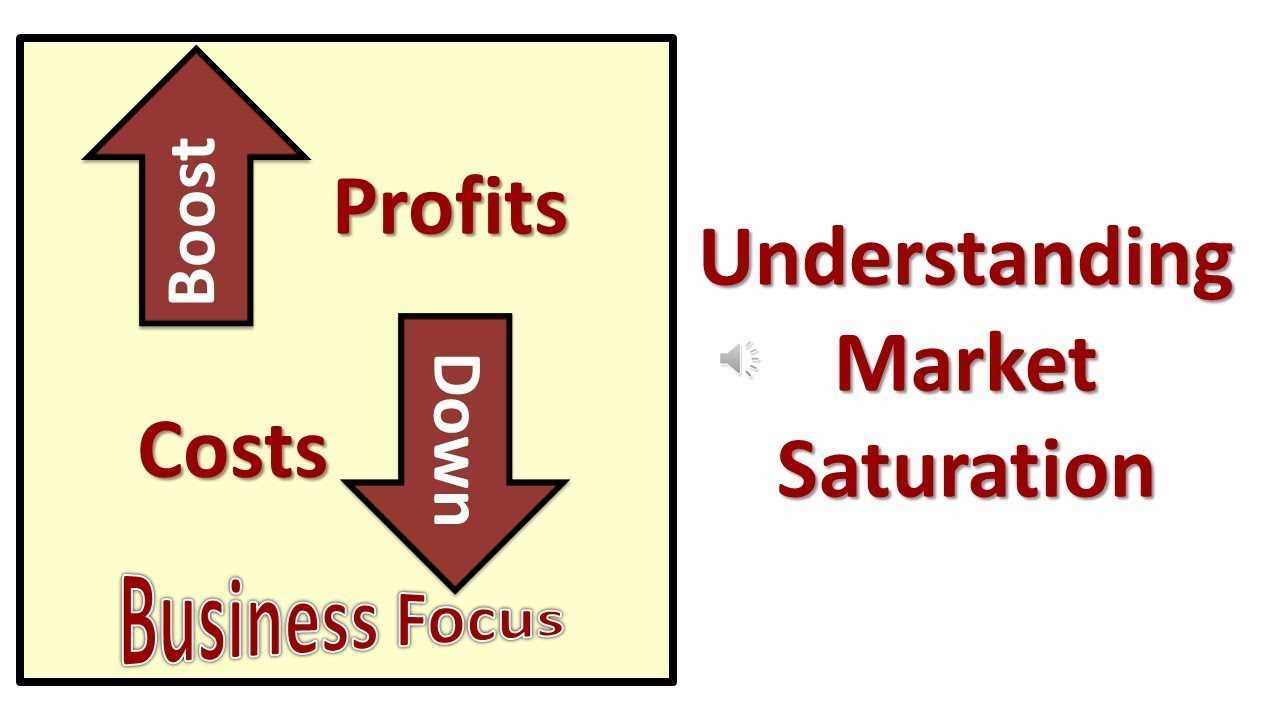What is Market Saturation?
Market saturation refers to a point in the business lifecycle where the demand for a product or service reaches its maximum potential within a specific market. At this stage, most potential customers have already purchased the product or service, leaving little room for further growth.
Market saturation can occur in various industries and is influenced by factors such as competition, consumer behavior, and market trends. It is important for businesses to understand market saturation as it can significantly impact their growth and profitability.
Factors Contributing to Market Saturation
There are several factors that contribute to market saturation:
- Competition: Increased competition within a market can lead to saturation as multiple companies vie for the same customers.
- Market Size: If the market size is relatively small, it is more likely to reach saturation quickly.
- Product Lifecycle: As a product matures and reaches the later stages of its lifecycle, the market is more likely to become saturated.
- Customer Behavior: Changes in customer preferences or the emergence of new technologies can lead to shifts in demand and contribute to market saturation.
Implications of Market Saturation
Market saturation poses several challenges for businesses:
- Reduced Growth Opportunities: Once a market reaches saturation, it becomes increasingly difficult for businesses to find new customers and expand their market share.
- Intense Competition: Saturation often leads to intensified competition among businesses, resulting in price wars and reduced profit margins.
- Decreased Customer Loyalty: With a saturated market, customers have more options to choose from, making it harder for businesses to retain their loyalty.
- Need for Differentiation: To stand out in a saturated market, businesses must differentiate themselves through unique value propositions, innovative products, or exceptional customer service.
Signs of Market Saturation
Market saturation refers to a point in the business cycle where the demand for a product or service has reached its peak and is no longer growing. It is important for businesses to be able to recognize the signs of market saturation in order to make informed decisions and adapt their strategies accordingly.
1. Declining Sales Growth
2. Increased Competition
As a market becomes saturated, competition among businesses intensifies. New entrants may try to gain market share by offering similar products or services at lower prices. This increased competition can lead to price wars and reduced profit margins for businesses operating in the saturated market.
Additionally, existing competitors may start to differentiate their offerings or invest heavily in marketing and advertising to maintain their market share. This can make it even more challenging for businesses to stand out and attract customers.
3. Decreased Customer Loyalty
In a saturated market, customers have more options to choose from, which can lead to decreased customer loyalty. Customers may be more likely to switch brands or try out new products or services, especially if they perceive better value or benefits from competitors.
Businesses need to work harder to retain their existing customers and build strong relationships to counteract this decreased customer loyalty. This may involve offering loyalty programs, personalized experiences, or exceptional customer service.
4. Price Sensitivity
Market saturation often leads to increased price sensitivity among customers. As competition increases and options become more abundant, customers become more price-conscious and may be less willing to pay a premium for a product or service.
Businesses operating in a saturated market need to carefully consider their pricing strategies to remain competitive. They may need to adjust their prices to attract and retain customers, while also ensuring that their profit margins are sustainable.
Challenges of Market Saturation

Market saturation refers to a point in the business cycle where the demand for a particular product or service has reached its peak and is no longer growing. This can present several challenges for businesses looking to maintain or increase their market share.
1. Increased Competition
2. Price Wars
With increased competition, companies may engage in price wars to attract customers. This can lead to a decrease in profit margins and make it challenging for businesses to maintain profitability. Companies must carefully manage their pricing strategies and find ways to add value to their products or services to justify higher prices.
3. Customer Loyalty
In a saturated market, customer loyalty becomes crucial. With many options available, customers may switch brands or products more easily. Businesses must focus on building strong relationships with their customers and providing exceptional customer service to retain their loyalty.
4. Market Differentiation
In a saturated market, it is essential for businesses to differentiate themselves from their competitors. This can be achieved through product innovation, unique marketing strategies, or superior customer service. Companies must continually invest in research and development to stay ahead of the competition and offer something unique to their customers.
5. Expansion Challenges

Expanding into new markets can be challenging in a saturated market. Companies may face resistance from established competitors or struggle to find untapped customer segments. Businesses must carefully analyze market trends and consumer behavior to identify new opportunities for expansion.
Navigating Market Saturation
Market saturation can present challenges for businesses, but with the right strategies, it is possible to navigate this crowded landscape and continue to thrive. Here are some tips to help you navigate market saturation:
1. Differentiate Your Product or Service
2. Target Niche Markets
Instead of trying to compete with established players in the broader market, consider targeting niche markets. These are smaller, specialized segments of the market that have specific needs or preferences. By focusing on these niche markets, you can tailor your product or service to meet their specific requirements and establish a strong presence. This approach allows you to differentiate yourself and build a loyal customer base.
3. Expand Your Offerings
Another way to navigate market saturation is by expanding your offerings. Look for opportunities to diversify your product or service line to appeal to a wider range of customers. This could involve introducing new variations, flavors, sizes, or packaging options. By continuously innovating and expanding your offerings, you can stay relevant and attract new customers.
4. Enhance Your Marketing Strategy
In a saturated market, effective marketing becomes even more important. Review your marketing strategy and identify areas for improvement. Consider investing in targeted advertising, social media campaigns, influencer partnerships, or content marketing to reach your target audience. By utilizing the right marketing channels and tactics, you can increase brand awareness and stand out from the competition.
Remember, navigating market saturation requires a proactive approach and continuous adaptation. Stay informed about industry trends, listen to customer feedback, and be willing to make necessary adjustments to stay ahead of the competition.
By implementing these strategies, you can successfully navigate market saturation and continue to grow your business.

Emily Bibb simplifies finance through bestselling books and articles, bridging complex concepts for everyday understanding. Engaging audiences via social media, she shares insights for financial success. Active in seminars and philanthropy, Bibb aims to create a more financially informed society, driven by her passion for empowering others.
